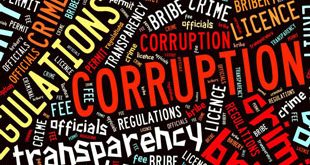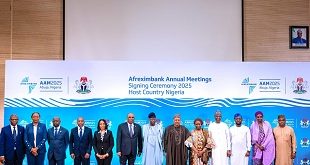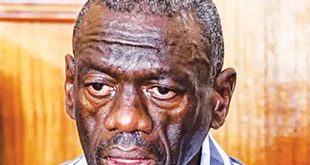
Why UPDF’s superior ideology has succeeded where America’s superior force failed
Over the last four years, I have had numerous debates with my friend Mohamed Ahmed Yahya aka Mo, a Briton of Somali descent about UPDF involvement in his motherland. My view is that state consolidation is primarily an endogenous process. External agents can help; but that assistance can only be successful if its role is secondary, aimed at improving the capacity of already existing strong and committed local actors. The first group with signs of capacity to establish effective military control over all of Somalia was the militia of Mohamed Farah Aideed, the Somali general who sent the Americans packing from that country. It is very possible that had the Americans actually supported Aideed, rather than fight him, to gain control over Somalia, we would today be having a functional state in that country.
The other serious internal actor to emerge ovThe other serious internal actor to emerge over the last 16 years and secure effective control over Mogadishu, establish order and security of person and property were the Islamic Courts Union. Within a short time of taking over Mogadishu and many parts of the country, they had used Islam to create some level of unity and common purpose in a country long divided along clan and sub-clan lines. They had also established the rule of law (hence the term Islamic Courts) in a country that had only known the law of the jungle. However, they were immediately bombed out of Mogadishu by the Americans supported by Ethiopian forces on the ground.
Therefore, the failure to recreate an effective state in Somalia has not been just due to internal infighting among the different clan militias but most critically external interference in its internal politics. My unorthodox view is that it is better to minimally facilitate the strongest group militarily to take control. Even if crude in its operational methods, a group like Al Shabaab can actually be sanitised through cajoling, bribes (of foreign aid and diplomatic recognition) and threats (of invasion or criminal prosecution). Yet today the international community is pushing for a functional democracy and civilised government in Somalia from the word “go”; an unrealistic objective.
Mo, on the other hand, has been a strong supporter of UPDF since it went in telling me that the different clan and Al Shabaab militias have wreaked so much havoc to be allowed to consolidate. On July 26, we boarded a plane for Mogadishu. Although Mo was born there about 35 years ago, he left the country when he was four years and had never returned. On the plane we met other Somalis; one of them was carrying a Danish passport and has been working in Somalia for an NGO, travelling through many parts of the country. This was his first time to Mogadishu. The other was a guy in his late 50s from Canada travelling with his son – again going back to Somalia for the first time in 30 years. I sat next to a Somali who now lives in Kenya but travels frequently to Mogadishu.
Mo and I kicked off our long standing debate on the role of UPDF in his country – is it liberation or occupation? Inadvertently we let lose the dogs of debate on the plane. The Somali from Kenya supported fervently by Mo was clear and unequivocal: UPDF and more precisely President Yoweri Museveni of Uganda is the best thing to have happened to Somalia in 20 years. The Somali carrying a Danish passport took almost the opposite view: UPDF’s counter insurgency operations have come at a very high cost in civilian life, what Americans euphemistically call “collateral “damage”. The one with a Canadian passport kept shifting between the two positions unsure which one to really stand for.
My role was to be an agent provocateur: all the time challenging the claim that UPDF are liberators although for nationalistic reasons I would really like to see our military seen by others as liberators. Besides my brother, Col. Kayanja Muhanga, is the commanding officer of UPDF’s Battle Group Eight that routed Al Shabaab out of Mogadishu. He is also the deputy contingent commander of the UPDF in Somalia. Like any human being, I am sure that even subconsciously I can only desire him to be involved in something noble. But I was keen to listen to the views of those most affected by the war – the Somalis – in Somalia.
Any theory has to be tested on the ground especially among those who live the real experience which the theory is meant to explain. If the views and feelings of the concerned parties are incongruent with the theory, then an adjustment is necessary. The tendency by most academics is to create another theory to explain the incongruence – so Karl Marx came with “false consciousness” and his followers in the imperialism school came with “neo-colonialism”. Who is to tell that UPDF are liberators or colonisers: the people of Somalia or a foreigner armed with an abstract theory? The problem of course is that the people of Somalia – as seen from the debate on the plane above – are not univocal. There are as many opinions and feelings as the people who live there. However, if a big majority, say 80 percent, feel that Ugandans are their liberators, who am I to say otherwise?
At Kayanja’s command headquarters, we met a young lady who had been blocked by Al Shabaab from running her shop – because she is a woman and therefore not supposed to do business. Now back to her business under the protection of UPDF, she was passionate, almost hysterical, in her denunciation of Al Shabaab and defence of our troops. I also met a young boy of about 15 whose mother was killed in his presence by Al Shabaab. Kayanja rescued him from the terrorists and now lives with him. For him, the UPDF are not just his saviours but also his family.
When we visited Lower Shebelle region, I held what Americans call “Town Hall” meetings with ordinary Somalis many of them former leaders and fighters of Al Shabaab now turned into soldiers of the Transitional Federal Government (TFG) and intelligence officers for the UPDF. It is difficult to know whether they could tell me their inner feelings given that I am Ugandan and I spoke to them in the presence of UPDF soldiers. However, there are many whose body language and passion in expressing themselves made me believe they genuinely support our troops’ role in pacifying their country. This was especially so with the younger former Al Shabaab fighters.
 The Independent Uganda: You get the Truth we Pay the Price
The Independent Uganda: You get the Truth we Pay the Price



Andrew, this article is complete without telling us the reason behind UPDF’s success. Was it the use of counterinsurgency measures, or the use of Somali civilians in the fight against the Al-Shabab? What did we do differently that we can be proud of? Is it possible that we succeeded because of maximum fire power or because of combine effort from the AU and UN?